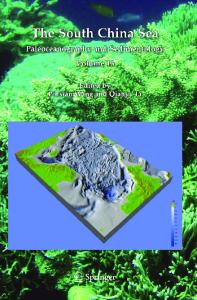Classification and 3-D distribution of upper layer water masses in the northern South China Sea
- PDF / 5,247,135 Bytes
- 10 Pages / 595 x 842 pts (A4) Page_size
- 92 Downloads / 380 Views
Classification and 3-D distribution of upper layer water masses in the northern South China Sea Jia Zhu1, Quanan Zheng2, Jianyu Hu1*, Hongyang Lin1, Dewen Chen3, Zhaozhang Chen1, Zhenyu Sun1, Liyan Li1, Hao Kong4 1 State Key Laboratory of Marine Environmental Science, College of Ocean and Earth Sciences, Xiamen University,
Xiamen 361102, China 2 Department of Atmospheric and Oceanic Science, University of Maryland, College Park, Maryland 20742, USA 3 Marine Forecast Station of Xiamen, State Oceanic Administration, Xiamen 361012, China 4 Fujian Provincial Key Laboratory of Coast and Island Management Technology, Fujian Institute of Oceanography,
Xiamen 361013, China Received 10 February 2018; accepted 14 May 2018 © Chinese Society for Oceanography and Springer-Verlag GmbH Germany, part of Springer Nature 2019
Abstract
Using the fuzzy cluster analysis and the temperature-salinity (T-S) similarity number analysis of cruise conductivity-temperature-depth (CTD) data in the upper layer (0–300 m) of the northern South China Sea (NSCS), we classify the upper layer water of the NSCS into six water masses: diluted water (D), surface water (SS), the SCS subsurface water mass (US), the Pacific Ocean subsurface water mass (UP), surface-subsurface mixed water (SU) and subsurface-intermediate mixed water (UI). A new stacked stereogram is used to illustrate the water mass distribution, and to examine the source and the distribution of UP, combining with the sea surface height data and geostrophic current field. The results show that water mass UP exists in all four seasons with the maximum range in spring and the minimum range in summer. In spring and winter, the UP intrudes into the Luzon Strait and the southwest of Taiwan Island via the northern Luzon Strait in the form of nonlinear Rossby eddies, and forms a high temperature and high salinity zone east of the Dongsha Islands. In summer, the UP is sporadically distributed in the study area. In autumn, the UP is located in the upper 200 m layer east of Hainan Island. Key words: water mass classification, northern South China Sea, fuzzy cluster analysis, T-S similarity number Citation: Zhu Jia, Zheng Quanan, Hu Jianyu, Lin Hongyang, Chen Dewen, Chen Zhaozhang, Sun Zhenyu, Li Liyan, Kong Hao. 2019. Classification and 3-D distribution of upper layer water masses in the northern South China Sea. Acta Oceanologica Sinica, 38(4): 126–135, doi: 10.1007/s13131-019-1418-2
1 Introduction The water mass distribution is a basic property of the ocean. Compared with water masses in the deep ocean, the water masses in the shelf water are poor in uniformity and stability. Since the 1960s, water mass analysis methods have been developed for shallow water, for example, the quantitative analysis of the temperature-salinity (T-S) relationship (Mao et al., 1964), the systematic cluster analysis (Su et al., 1983; Li et al., 1983), the stepwise cluster analysis (Qiu et al., 1984), the fuzzy cluster analysis (Chen and Du, 1990; Li et al., 1992; Yang et al., 1992), and the T-S diagram method (Zou et
Data Loading...











